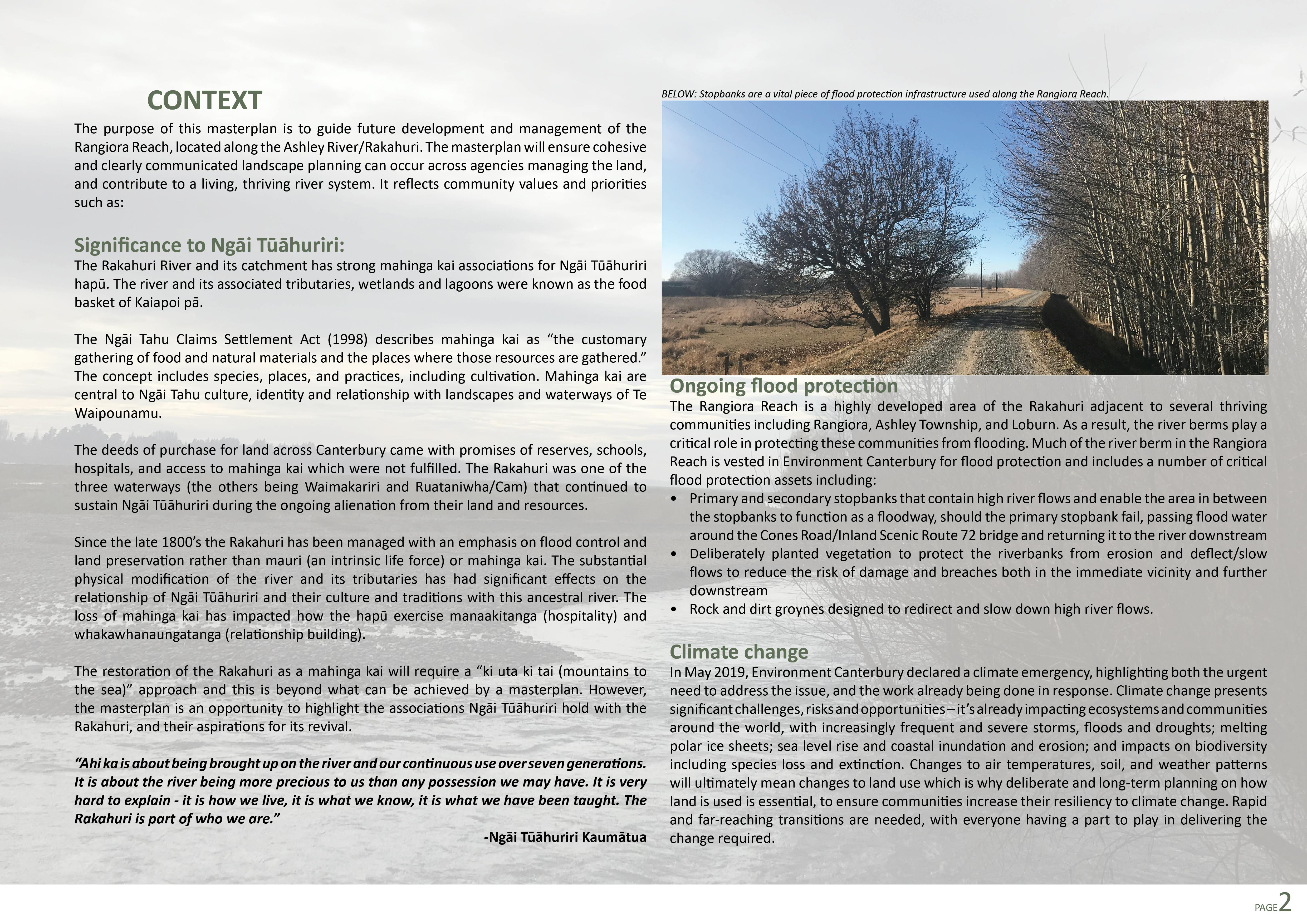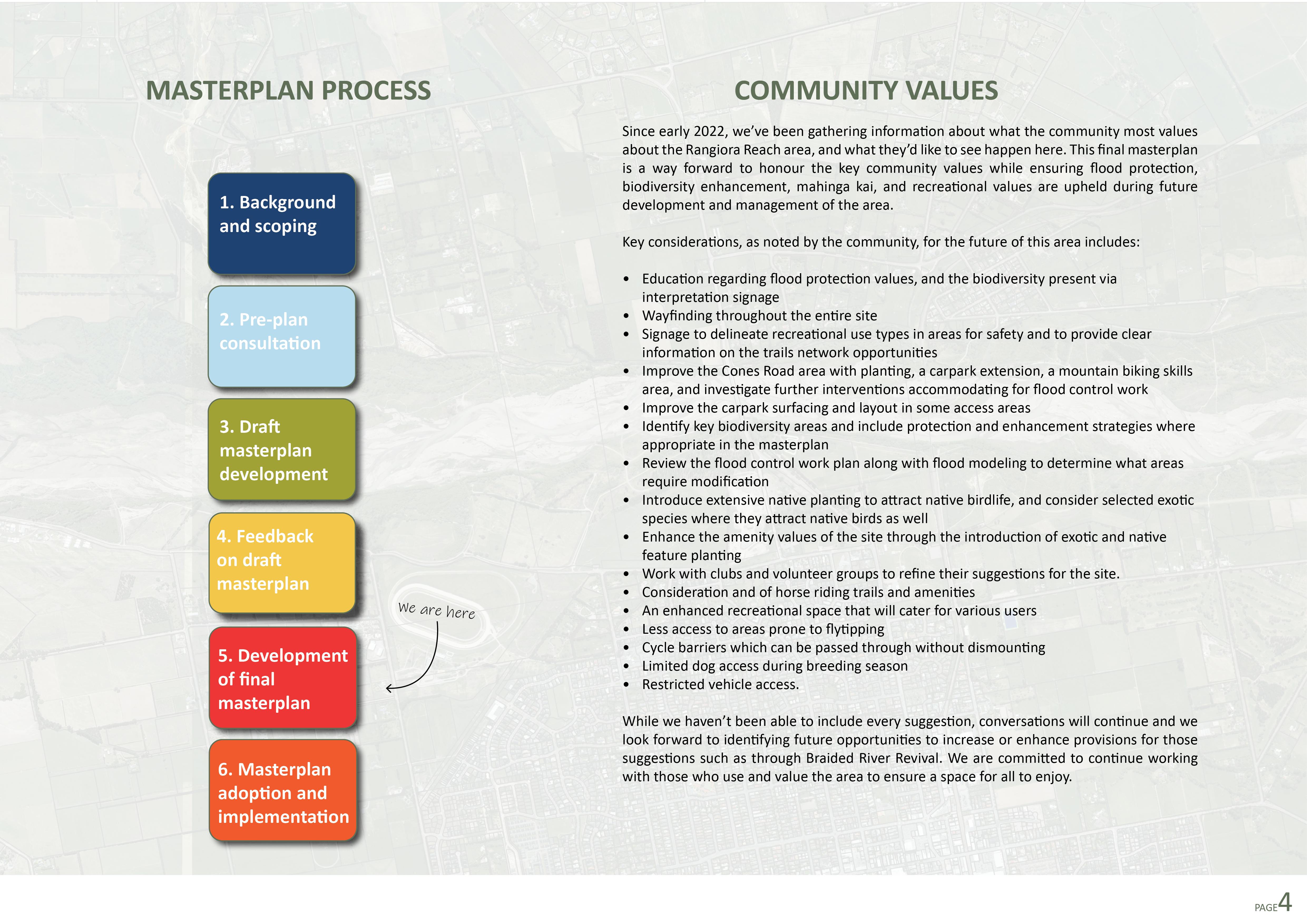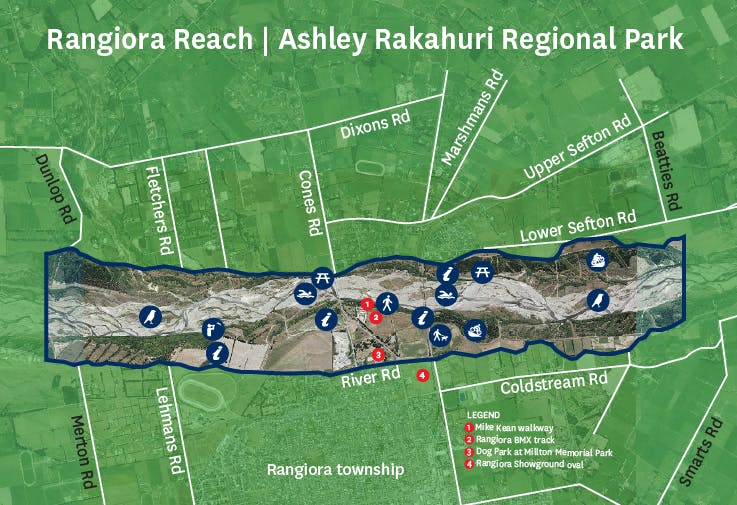Rangiora Reach Masterplan highlights future opportunities for part of Ashley River/Rakahuri
We’re pleased to be able to share the Rangiora Reach Masterplan, which aims to deliver a landscape plan for a section of the Ashley River/Rakahuri.
The masterplan will guide future development and management of Rangiora Reach – the part of the awa/river from Dunlops Road to Beatties Road on the north side near Rakahuri, and Merton Road to Smarts Road on the south side near Rangiora.
It will be used by agencies managing this land – Environment Canterbury and Waimakariri District Council, in collaboration with mana whenua and the community.
The masterplan reflects around two years of conversation, consultation, feedback, workshops and hui we’ve had with the community. We hope it reflects people's values and priorities, but also helps meet the need to keep them safe through a changing climate.
The values and priorities included throughout the development of the masterplan include:
- Significance to Ngāi Tūāhuriri
- Ongoing flood protection
- Climate change
- Landscape and natural character
- Indigenous biodiversity
- Recreation
- Braided River Revival
The braided river revival team is happy to be able to deliver a plan to the community that balances their values and priorities alongside flood protection and climate change too.
As our environment changes, it’s important to shape future planning in a way that protects both the ecosystems within that environment, but also the people who call that place home.
While there were some non-negotiable structural elements like flood protection, we hope the masterplan will help to set the vision as we work towards achieving a living, thriving awa.
Continued conversations and future opportunities
“We’d like to thank everyone who took the time to let us know their thoughts,” says Greg Stanley, Regional Lead for Braided River Revival.
“Although we haven’t been able to offer increased amenities for absolutely every suggestion we received, the conversations around those suggestions will continue and we look forward to identifying future opportunities to enhance them in this reach, or along other areas of the awa,” he says.
With an agreed set of values established, the masterplan is a way we can ensure future development of the area will reflect those values.
Work is already underway with the community, such as the planting in the Cones Road area. Other components will require continued planning by Environment Canterbury and Waimakariri District Council to see how we can create collaborate to achieve the masterplan outcomes.
“It’s a big step forward and something we’re proud to have partnered with the community on, but the mahi is just beginning!” he says.
View the Rangiora Reach Masterplan in the gallery, or download it as a PDF, in the menu on the right of this page.








